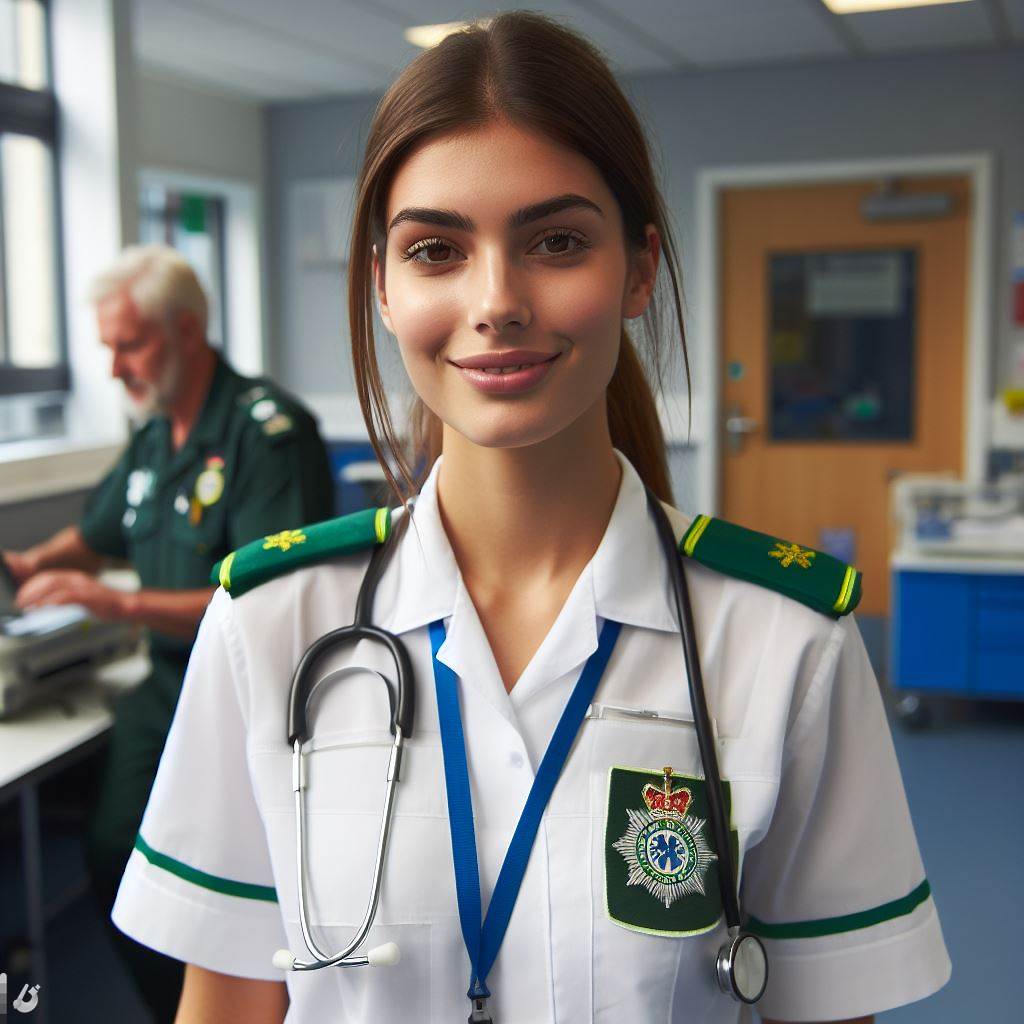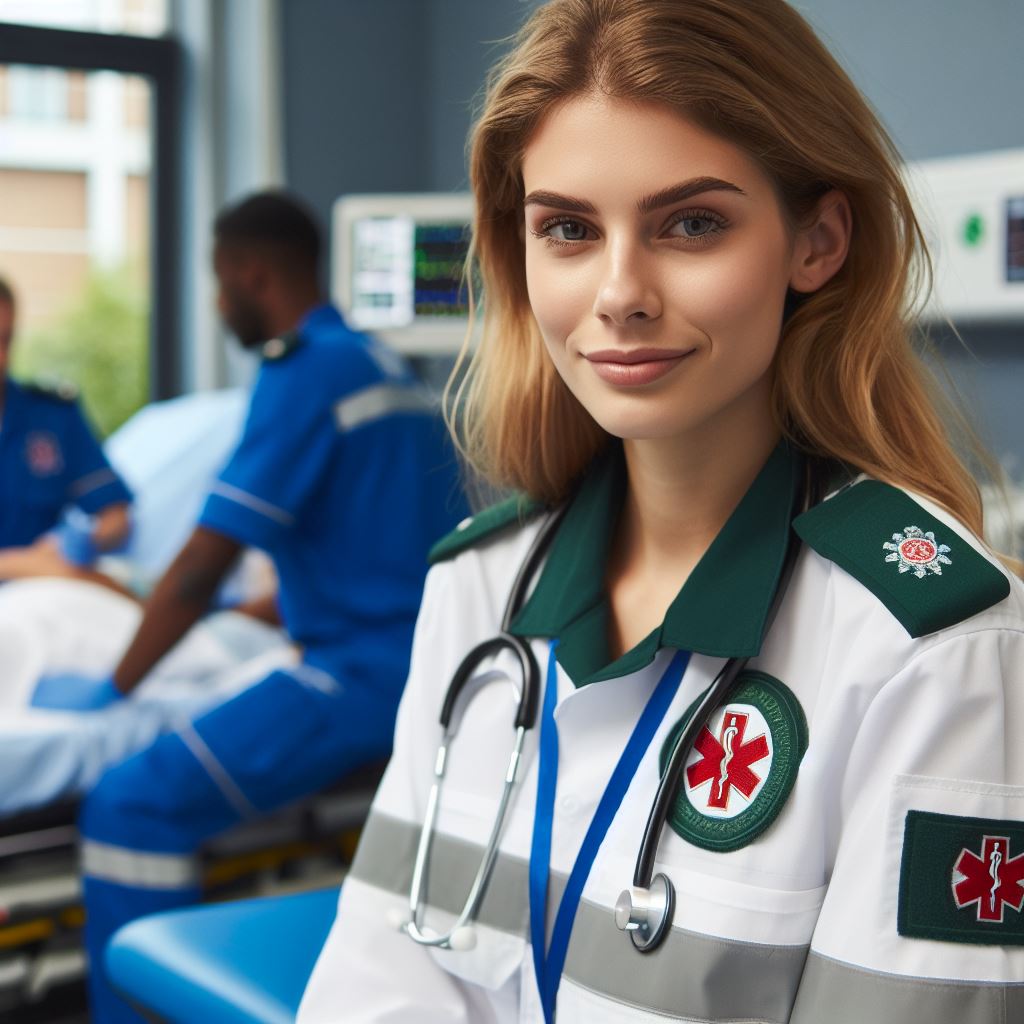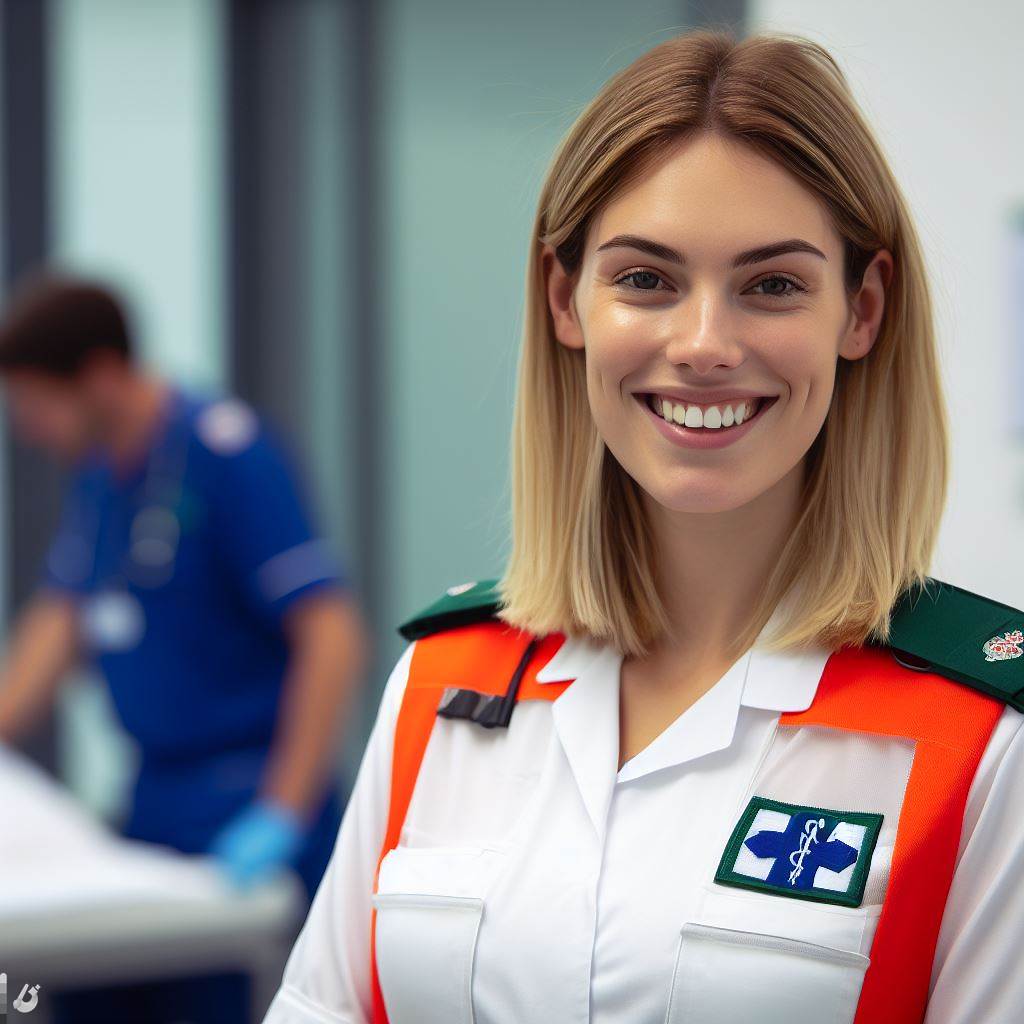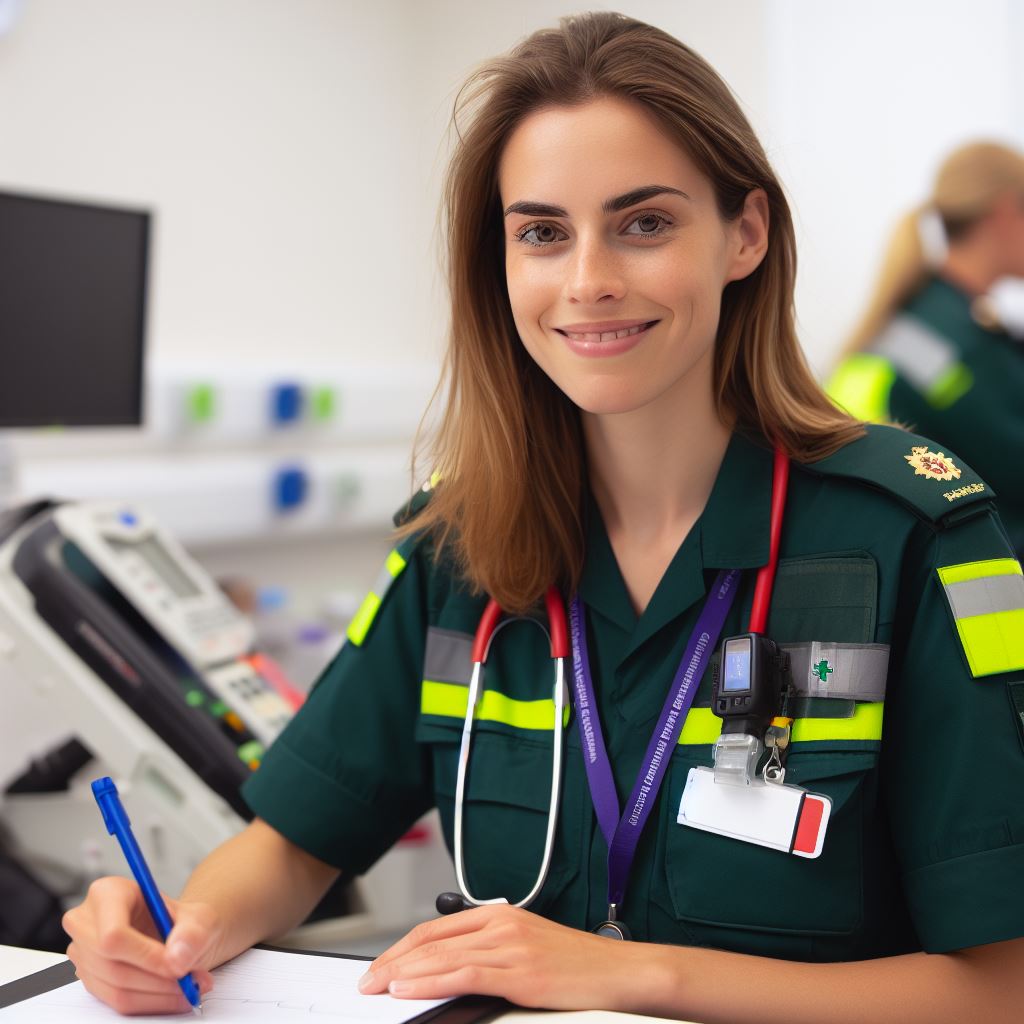Introduction
Role of paramedics in the UK
In the UK, paramedics play a crucial role in providing emergency medical care to those in need.
They are highly trained healthcare professionals who respond to emergency calls, assess patients’ conditions, and provide necessary treatment on the scene or during transportation to a hospital.
Importance of having the right equipment for paramedics
Having the right equipment is of utmost importance for paramedics as it enables them to effectively perform their duties and provide the best care possible.
Proper equipment enhances their ability to assess and stabilize patients, ensuring timely and appropriate interventions that can save lives.
The purpose of this blog post is to emphasize the significance of equipping paramedics with the essential tools they need to fulfill their duties efficiently.
By understanding the specific equipment paramedics require, readers can gain insight into the challenges they face and the critical role their equipment plays in patient outcomes.
Throughout the post, we will explore various essential equipment items that paramedics rely on, such as defibrillators.
Airway management devices, trauma and medical kits, and personal protective equipment.
By understanding the importance of these tools and how they are used, readers can appreciate the complexity of a paramedic’s job and the critical impact their equipment has on patient care.
In the upcoming sections, we will delve deeper into each equipment category, highlighting their features, benefits, and the role they play in delivering effective pre-hospital care.
Stay tuned for in-depth discussions on the life-saving tools used by paramedics in the UK and how they contribute to the delivery of exceptional emergency medical services.
Essential Personal Protective Equipment (PPE) for Paramedics
Paramedics play a crucial role in providing emergency medical care in the UK.
To ensure their safety while dealing with potentially infectious and hazardous situations, the use of personal protective equipment (PPE) is essential.
This blog section will discuss the importance of PPE, list the essential items, and provide guidance on their proper usage and disposal.
Importance of PPE
PPE acts as a barrier between paramedics and harmful substances encountered during their work.
It significantly reduces the risk of exposure to infectious diseases, chemicals, bodily fluids, and other hazards.
By wearing the appropriate PPE, paramedics can protect themselves and prevent the transmission of infections to patients and others.
Essential PPE Items
To ensure maximum safety, paramedics must be equipped with the following essential PPE items:
- Gloves: These should be made of a suitable material that offers protection against punctures and cuts.
- Masks: Respiratory masks, such as N95 respirators, are crucial to protect against airborne particles and infectious diseases.
- Goggles or Face Shields: These protect the eyes and face from splashes, sprays, and other potential hazards.
- Protective Clothing: Specialized suits or gowns, covering the body completely, shield paramedics from contamination.
Proper Usage and Disposal of PPE
Simply having the necessary PPE is not enough; it must be used correctly to ensure maximum effectiveness.
Paramedics should follow these guidelines:
- Gloves should be worn whenever there is a risk of contact with bodily fluids, wounds, or potentially infectious materials.
- Before putting on or removing gloves, proper hand hygiene must be practiced using soap and water or hand sanitizer.
- Respiratory masks should cover the mouth and nose completely and should be fit-tested for an airtight seal.
- Goggles or face shields should be worn in situations where there is a risk of splash, aerosols, or droplets.
- Protective clothing should be worn over regular uniforms and should be changed if visibly soiled or damaged.
- After use, PPE should be disposed of properly in designated containers to prevent cross-contamination.
- Paramedics should receive training on the proper usage, donning, doffing, and disposal of PPE.
It is vital that paramedics always have an adequate supply of PPE on hand. Regular inspections should be conducted to ensure that PPE is in good condition, and any damaged or expired items should be replaced immediately.
In general, personal protective equipment is crucial for the safety of paramedics.
By wearing the appropriate PPE, paramedics can confidently provide care while minimizing the risk of exposure to infectious diseases and other hazards.
Understanding the importance, proper usage, and disposal of PPE is essential for every paramedic in the UK.
Communication tools
Effective communication is essential for paramedics to deliver prompt and efficient emergency medical services. To ensure seamless communication, paramedic operations rely on a range of communication tools.
This section will provide an overview of the communication equipment necessary for effective paramedic operations, including two-way radios, mobile data terminals, and smartphones.
Additionally, it will emphasize the importance of reliable communication in emergency situations.
Paramedics need to have access to reliable communication tools to communicate with their teams, medical facilities, and other emergency personnel.
Two-way radios are one of the most commonly used communication devices in paramedic operations.
These radios enable paramedics to maintain constant contact with their base station and other team members in real-time.
Two-way radios, mobile data terminals, and smartphones used for communication
Two-way radios are specifically designed for instant communication. They allow paramedics to transmit and receive messages quickly, efficiently, and securely.
With the push of a button, paramedics can share vital information about the patient’s condition, request additional resources, and coordinate their actions with other emergency personnel.
Personalized UK Career Consulting
Receive tailored career guidance designed just for you. Get actionable steps and expert support to boost your career in 1-3 days. Take control of your career now.
Get StartedIn addition to two-way radios, paramedics also rely on mobile data terminals (MDTs) for communication. MDTs are portable computers installed in emergency vehicles.
They provide paramedics with access to various databases, including patient records, medical protocols, and mapping applications.
MDTs enable paramedics to gather critical information about the patient’s medical history, allergies, and prescribed medications, allowing them to make informed decisions in the field.
Moreover, smartphones have become integral tools for paramedics in recent years. Smartphones offer a wide range of functionalities, such as voice calls, text messaging, and internet access.
Paramedics can use smartphones to communicate with their base station, medical specialists, or even to access medical apps for quick reference and decision support.
Importance of reliable communication in emergency situations
Reliable communication is vital in emergency situations due to the time-sensitive nature of medical emergencies.
Paramedics need to communicate effectively to ensure prompt response and coordinated actions.
Timely communication helps in conveying crucial information about the patient’s condition, enabling medical facilities to prepare and provide appropriate assistance.
In emergency scenarios, delays or breakdowns in communication can have severe consequences.
Miscommunication or lack of communication can lead to misunderstandings, delays in treatment, or even potential harm to the patient.
Reliable communication tools minimize these risks by providing a direct and efficient means of communication.
In general, communication tools play a crucial role in effective paramedic operations.
Two-way radios, mobile data terminals, and smartphones enable paramedics to communicate efficiently, share vital information, and coordinate their actions with other emergency personnel.
Timely and reliable communication is crucial to ensure accurate coordination, quick response, and optimal patient care in emergency situations.
Read: Nurse Education: Degrees and Courses in the UK
Medical Equipment for Patient Assessment and Treatment
Paramedics in the UK carry a range of medical tools and equipment to assess and treat patients effectively. These tools are vital for providing immediate medical care in emergency situations.
Let’s explore some of the essential equipment used by paramedics in the field:
Devices for Monitoring Vital Signs
Paramedics rely on various devices to monitor the vital signs of patients accurately.
These tools help them assess the severity of a patient’s condition and determine the most appropriate treatment.
Two common devices used for this purpose are blood pressure monitors and pulse oximeters.
Blood pressure monitors allow paramedics to measure a patient’s blood pressure quickly.
This information is crucial in determining whether a patient’s blood pressure is within the normal range or if immediate intervention is required.
Pulse oximeters, on the other hand, measure the oxygen saturation levels in a patient’s blood.
This information helps paramedics evaluate the effectiveness of the patient’s respiratory system and can indicate the need for additional oxygen therapy.
Tools for Airway Management and Respiratory Support
Paramedics are trained to handle airway management and provide respiratory support if necessary.
They carry specific tools to assist them in these critical tasks, including bag-valve masks and advanced airway devices.
Bag-valve masks, also known as BVMs, are handheld devices that provide positive pressure ventilation to patients who are unable to breathe adequately on their own.
They consist of a mask connected to a self-inflating bag, allowing paramedics to manually assist a patient’s breathing when needed.
In more complex cases, paramedics may utilize advanced airway devices, such as endotracheal tubes or supraglottic airways.
These devices are inserted into the patient’s airway to ensure a secure and patent airway during transportation to the hospital.
Other Essential Equipment
In addition to the tools mentioned above, paramedics also carry other essential equipment to provide comprehensive care to their patients.
Your Dream Job Starts with a Perfect CV
Get a tailored CV and cover letter that captures your unique strengths and stands out in your industry. Let us help you make an unforgettable first impression.
Get StartedDefibrillators are one such crucial tool. These devices deliver an electric shock to restore a normal heart rhythm in patients experiencing cardiac arrest.
Early defibrillation significantly increases the chances of survival for these patients.
Emergency medications are also carried by paramedics to address various medical conditions.
These medications include epinephrine for allergic reactions, aspirin for suspected heart attacks, and naloxone for opioid overdoses.
Other equipment commonly found in a paramedic’s arsenal includes trauma kits, splints, cervical collars, and stretchers.
These tools enable paramedics to stabilize injuries, provide necessary immobilization, and safely transport patients to medical facilities.
In fact, paramedics in the UK are equipped with a range of medical tools and equipment to assess and treat patients effectively.
From devices to monitor vital signs to tools for airway management and respiratory support, along with essential equipment like defibrillators and emergency medications.
Paramedics have the necessary resources to provide immediate and life-saving care in emergency situations.
Read: How UK Nurses Balance Work and Personal Life

Transport and extrication equipment
Transport and extrication equipment plays a crucial role in the work of paramedics in the UK.
Equipment used for patient transport and extrication
Paramedics rely on a variety of tools to safely move and transport patients.
Firstly, ambulance stretchers are essential in providing a stable platform for patient transport.
- These stretchers are designed to be sturdy and adjustable to accommodate patients of different sizes.
- They have wheels that enable paramedics to easily maneuver patients in and out of confined spaces.
- Some stretchers even have a hydraulic system to assist with lifting and lowering patients.
Patient transfer boards are another useful tool for paramedics during transport
- These boards are typically made of durable materials such as plastic or wood and are used to slide patients from one surface to another.
- They help prevent unnecessary lifting and reduce the risk of injury for both patients and paramedics.
Spine boards are vital in cases where there is a suspected spinal injury
- These rigid boards provide immobilization and support to the patient’s spine, minimizing the risk of further damage during transport.
- Spine boards are equipped with straps and head immobilizers to secure the patient in place.
- They are often used in conjunction with cervical collars for added stability.
Importance of immobilization devices for patients with suspected spinal injuries
When dealing with potential spinal injuries, the use of immobilization devices is crucial.
Proper immobilization helps prevent further spinal cord damage and potential lifelong disabilities.
- In such cases, paramedics prioritize using spine boards and cervical collars to maintain the patient’s stability.
- Without immobilization, movements can aggravate spinal injuries, leading to irreversible consequences.
- Immobilization devices ensure that the patient’s spine remains in a neutral position during transportation.
Moreover, immobilization devices facilitate safe extrication from dangerous or confined spaces.
- For instance, in a car accident, paramedics can secure the patient to a spine board before extricating them from the wreckage.
- This process helps prevent any further injuries during the extraction process.
In emergency situations, paramedics must possess a thorough understanding of transport and extrication equipment.
By utilizing proper tools and techniques, they can ensure the safety and well-being of their patients.
Ultimately, transport and extrication equipment are essential components of the paramedic’s toolkit in the UK.
Optimize Your LinkedIn for Success
Boost your LinkedIn profile with a professional bio, keyword-rich headline, and strategic recommendations that attract recruiters. Stand out from the crowd and get noticed.
Optimize NowRead: Nursing Unions in the UK: Benefits and Roles
Miscellaneous Equipment
When responding to emergency situations, paramedics in the UK carry a range of miscellaneous equipment to assist them in providing essential medical care.
These additional tools are crucial in managing various scenarios and ensuring the best possible outcomes for patients.
Trauma Shears
One of the most common items found in a paramedic’s medical bag is a pair of trauma shears.
These specially designed scissors are used to quickly cut through clothing and other materials to gain access to injuries or apply life-saving interventions.
Penlights
Paramedics also carry penlights, small flashlights used to examine a patient’s eyes, throat, and other body cavities.
These compact devices enable them to assess the patient’s condition and identify potential issues such as pupil dilation or obstructions.
First Aid Kits
No paramedic is complete without a well-stocked first aid kit. These kits contain essential items like bandages, dressings, adhesive tape, and antiseptic solutions.
Paramedics deliver immediate care, ensuring patients receive prompt attention before hospital transfer or further medical intervention.
Importance of a Well-Stocked Medical Bag
Having a well-stocked and organized medical bag is of utmost importance for paramedics.
In emergency situations, time is critical, and having all necessary equipment readily available can significantly improve patient care.
It allows paramedics to respond quickly and effectively to a wide range of medical emergencies without wasting precious seconds searching for supplies.
Organized Layout
Paramedics organize medical bags for swift access to specific equipment in chaotic, time-sensitive situations.
When every second counts, being able to locate the required tools quickly can make a significant difference in providing timely medical interventions.
Customization
Paramedics often personalize their medical bags to suit their preferences and specific needs.
They may include additional items such as spare batteries, extra gloves, or specialized tools tailored to certain situations or unique patient requirements.
Equipment Maintenance
Regular maintenance of all equipment is essential to ensure its functionality and reliability.
Paramedics routinely check and restock their medical bags, replacing expired items and replenishing supplies to guarantee readiness for any emergency.
Training and Familiarity
In addition to stocking essential equipment, paramedics undergo comprehensive training to familiarize themselves with each item’s usage.
They practice simulated scenarios to develop muscle memory, enabling them to efficiently utilize the equipment in high-pressure situations.
Paramedics in the UK carry a variety of miscellaneous equipment to handle diverse medical emergencies effectively.
Paramedics keep trauma shears, penlights, and well-stocked first aid kits, ensuring readiness for critical care at a moment’s notice.
Organizing a medical bag is crucial for swift access to life-saving tools during high-stress situations, emphasizing its importance.
Read: Challenges Faced by Nurses in the UK Today
Delve into the Subject: UK Paramedic Shift Patterns Explained
Uncover the Details: Interview Tips for UK Med Tech Jobs
Conclusion
This blog post has highlighted the essential paramedic equipment in the UK.
We discussed the significance of having the right equipment for paramedics to ensure efficient and effective emergency care.
Recapping the blog, we discussed the importance of equipment such as defibrillators, airway management tools, and medical bags.
These tools are vital for saving lives and providing immediate medical care in critical situations.
Having the right equipment is crucial for paramedics in the UK. It enables them to respond effectively to emergencies and make quick decisions based on the patient’s conditions.
With the right equipment, paramedics can perform life-saving procedures and interventions on the scene, improving patient outcomes.
In closing, equipping paramedics with the necessary tools is essential for providing efficient and effective emergency care.
The right equipment empowers paramedics to respond quickly and confidently, ensuring the best possible care for patients.
By investing in the proper paramedic equipment, we can better support our paramedics on the frontline and ultimately save more lives.
[E-Book for Sale]
500 Cutting-Edge Tech Startup Ideas for 2024 & 2025: Innovate, Create, Dominate
$19.99 • 500 Tech Startup Ideas • 62 pages
You will get inspired with 500 innovative tech startup ideas for 2024 and 2025, complete with concise descriptions to help you kickstart your entrepreneurial journey in AI, Blockchain, IoT, Fintech, and AR/VR.




